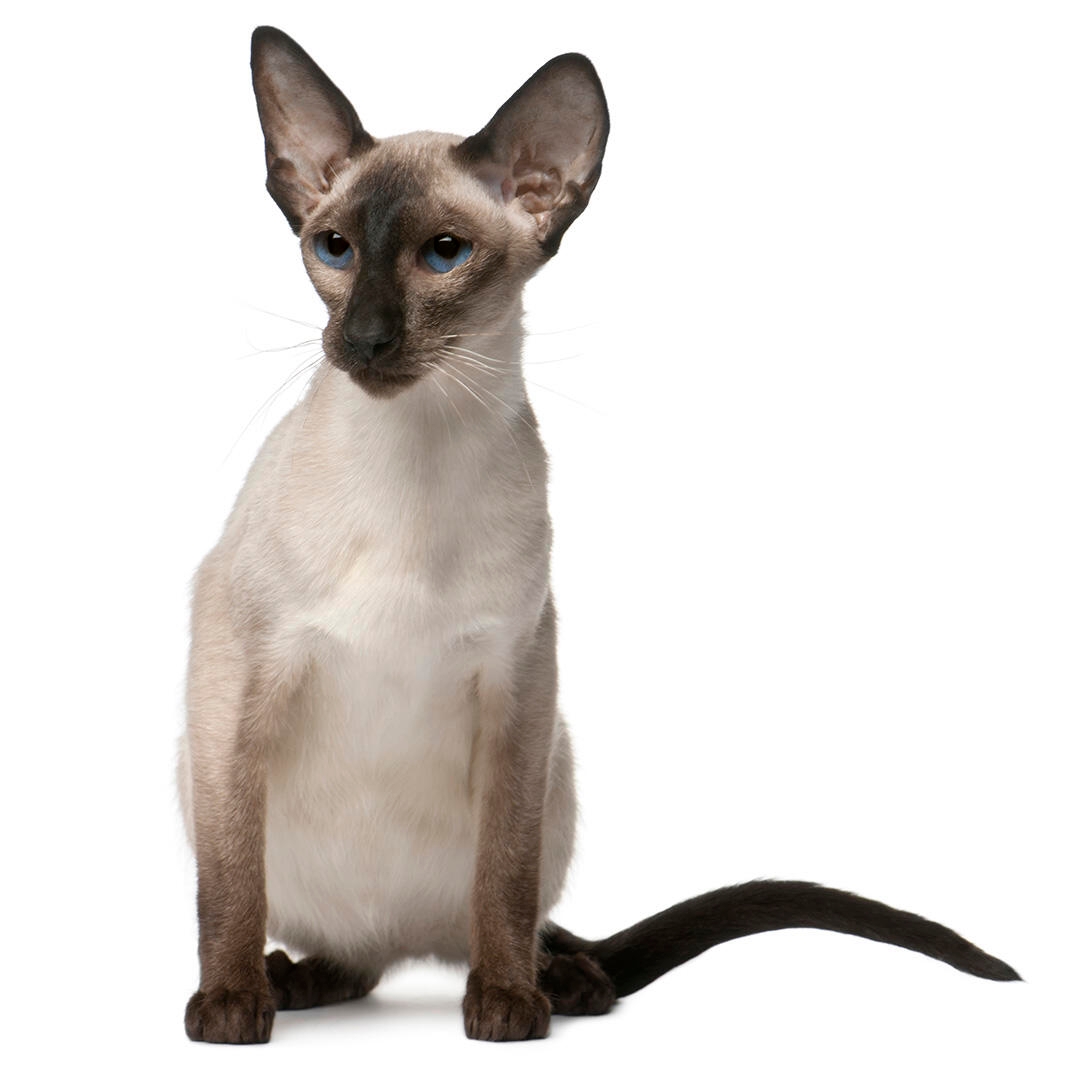
| Family-friendly: | 2/5 |
| Playfulness: | 4/5 |
| Intelligence: | 3/5 |
| Tendency to Vocalise: | 5/5 |
| Likes Other Pets: | 4/5 |
| Grooming needs: | 4/5 |
| Shedding: | 3/5 |
Balinese cats can suffer from:
- Progressive retinal atrophy which is an inherited disorder where part of the eye degenerates and wastes away which can result in blindness.
Testing available:
- DNA testing for progressive retinal atrophy which tests whether or not a cat has the potential to be affected by this condition.
Playful and inquisitive, the Balinese is a clever, demanding cat who will thrive on attention, fun and games but who may become loud and destructive without this. Consider them toward the more high-maintenance end of the cat scale - more a specialist cat than a relaxing, quiet companion!
| Family-friendly: | 2/5 |
| Playfulness: | 4/5 |
| Intelligence: | 3/5 |
| Tendency to Vocalise: | 5/5 |
| Likes Other Pets: | 4/5 |
| Grooming needs: | 4/5 |
| Shedding: | 3/5 |
The Balinese owes its existence to the random occurrence of long-haired kittens appearing in litters of Siamese cats. They were first spotted in the 1940’s and American breeders decided to separate these kittens and breed them together to see if they could reliably produce long haired kittens with the same Siamese appearance. No other cat breed has been involved in the ancestry of the Balinese, and they were first imported to the UK in 1973.
It should be noted that like the Siamese, the Balinese has two versions, the old style and the modern, which have very different head and body shapes but are considered the same breed.
This cat’s striking nature and loud, demanding meows mean they are not ideal to leave out unsupervised, where they can pester your neighbours, perform daylight robbery and are at risk of being stolen themselves. However, they are athletic and intelligent and need the enrichment that the great outdoors can provide, so we’d recommend a cat-proofed garden or an extensive enclosure or ‘catio’ to give your Balinese more space and room to play, bird-watch and climb.
Much like their Siamese ancestors, the Balinese likes to climb, explore and play. Invest in extensive cat trees and toys, or they will absolutely turn their attentions to your trinkets, ornaments and furniture (actually, we wouldn’t suggest that you have ornaments or trinkets if you have a Balinese cat as they will almost certainly end up on the floor!).
Whilst they will entertain themselves some of the time with jungle-gyms and interactive food dispensing toys, this is no substitute for time spent with you so ensure you have the time for this feline as they really won’t take no for an answer! Check out our ideas for fun cat games you can play together.
Every cat is unique and each has their own particular likes, dislikes, and needs when it comes to food. However, cats are carnivores and every cat must obtain 41 different and specific nutrients from their food. The proportion of these nutrients will vary depending on age, lifestyle and overall health, so it's not surprising that a growing, energetic kitten needs a different balance of nutrients in her diet than a less active senior cat. Other considerations to bear in mind are feeding the right quantity of food to maintain 'ideal body condition' in accordance with feeding guidelines and catering to individual preference regarding wet or dry cat food recipes. Find out more about cat feeding guidelines with our article.
The Balinese cat also needs regular and frequent cat grooming to keep its lovely but fine coat in good condition and free from knots and tangles. Remember that a greasy coat can be evidence that your cat is no longer attempting to groom themselves, which can be indicative of poor or failing health. As with all cats, the Balinese benefits from regular vaccination, feline parasite control and an annual veterinary cat health check.
If you are ready to spend most of your free time entertaining your cat - and are happy to say goodbye to nick-nacks, trinkets and ornaments on windowsills and mantlepieces, then the Balinese may well be for you! Probably better suited to the adult only home, or a home with older children who can respect a cat’s space and needs as this can be a rather loud and demanding cat to live with.